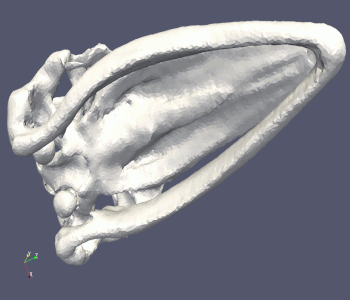Having put together and analyzed a 3D computer model of the skull of a fin whale, biologist Ted W. Cranford with the San Diego State University in the US and colleagues found that marine mammals belonging to this species use more than just their ears to hear.
Thus, in a paper published in yesterday's issue of the science journal PLOS ONE, the researchers say that, as shown by their investigations, fin whales also rely on their skulls to detect sound waves. The biologists go on to argue that this might also be true for other baleen species.
How fin whales use their skulls to hear
In the report detailing their work, biologist Ted W. Cranford and fellow researchers explain that, as part of this research project, they started by documenting the anatomy of a fin whale skull recovered from a specimen that washed ashore in California back in 2003.
This allowed them to put together a 3D computer model of the skull that comprised millions of interlocked teeny tiny elements. Writing in the journal PLOS ONE, the scientists explain that what they did was kind of, sort of like dividing the skull into an army of LEGO bricks.
Once the computer model was completed, Ted W. Cranford simulated a sound wave passing through it. He found that, rather than remaining locked in their place, the elements all began to vibrate. This process, known as bone conduction, amplified the sound and carried it to the ears.
To get a better idea of how a fin whale's skull behaves when exposed to sound waves, check out the animation below. True, the motion depicted in this simulation is exaggerated in order to be easier to see, but the underlying principles are the same.
“Bone conduction is likely the predominant mechanism for hearing in fin whales and other baleen whales,” San Diego State University biologist Ted W. Cranford commented on this discovery. “This is, in my opinion, a grand discovery,” the researcher added.
Why bother to learn about how whales hear?
Ted W. Cranford and colleagues did not carry out this investigation just for the fun of it. The specialists expect that their findings will help protect fin whales and other baleen species against the noise pollution resulting from commercial shipping, military exercises, and offshore energy exploration.
This is all the more important given the fact that, in this day and age, baleen species like minke whales, right whales and fin whales are all listed as endangered and risk falling off the biodiversity map in the not-too-distant future, the researchers stress.

 14 DAY TRIAL //
14 DAY TRIAL // 

